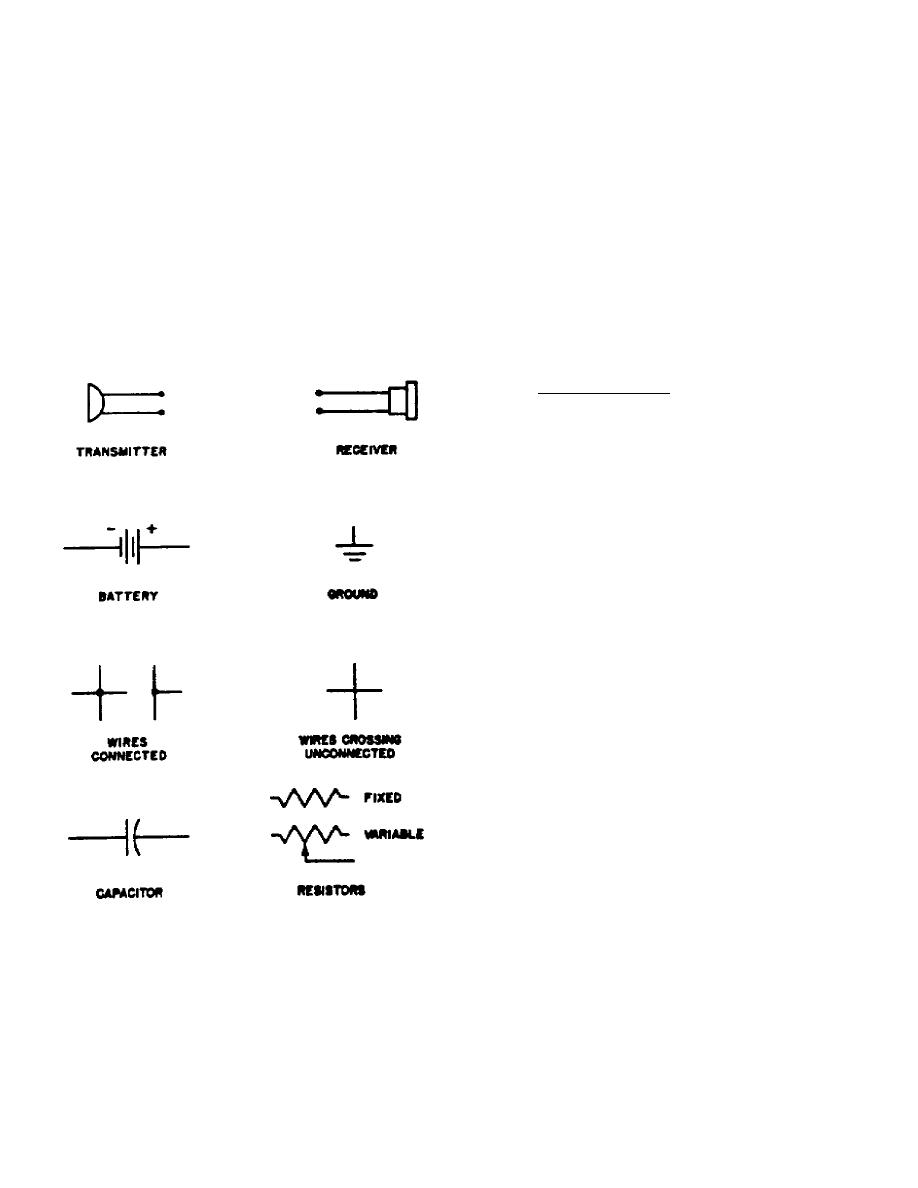
d. Learn to think of each part or unit in a circuit in terms of its function in the circuit. An understanding of why
a particular part is included is extremely helpful in learning its position in a schematic diagram.
e. Form the habit of visualizing the position of a unit in the actual equipment from its position in a schematic
diagram of the equipment. This will prove helpful when it is necessary to work on the equipment from a schematic
diagram. Remember that the position of the symbol in a schematic diagram does not correspond necessarily to the
location of the unit in the equipment.
f. Learn to distinguish between the electrical circuit and the mechanical operations associated with the circuit.
g. Review, from time to time, the symbols learned previously, and the relationships among the smaller units
which make up the complete circuit.
h. Follow faithfully all of the foregoing principles and procedures, for they are indispensable to the rapid
acquiring of skill in the reading of schematic diagrams.
27.
Telephone Symbols.
This chapter has included discussions of the
operating principles of telephone transmitters and
receivers. These units, together with such electrical
devices as batteries and resistors, are basic components
of telephone systems. Figure 22 shows most of the
symbols for the units and devices so far discussed. A
more complete list of the fundamental electrical symbols
used in telephone circuits is contained in the appendix.
FIGURE 22. Telephone Symbols
49



 Previous Page
Previous Page
